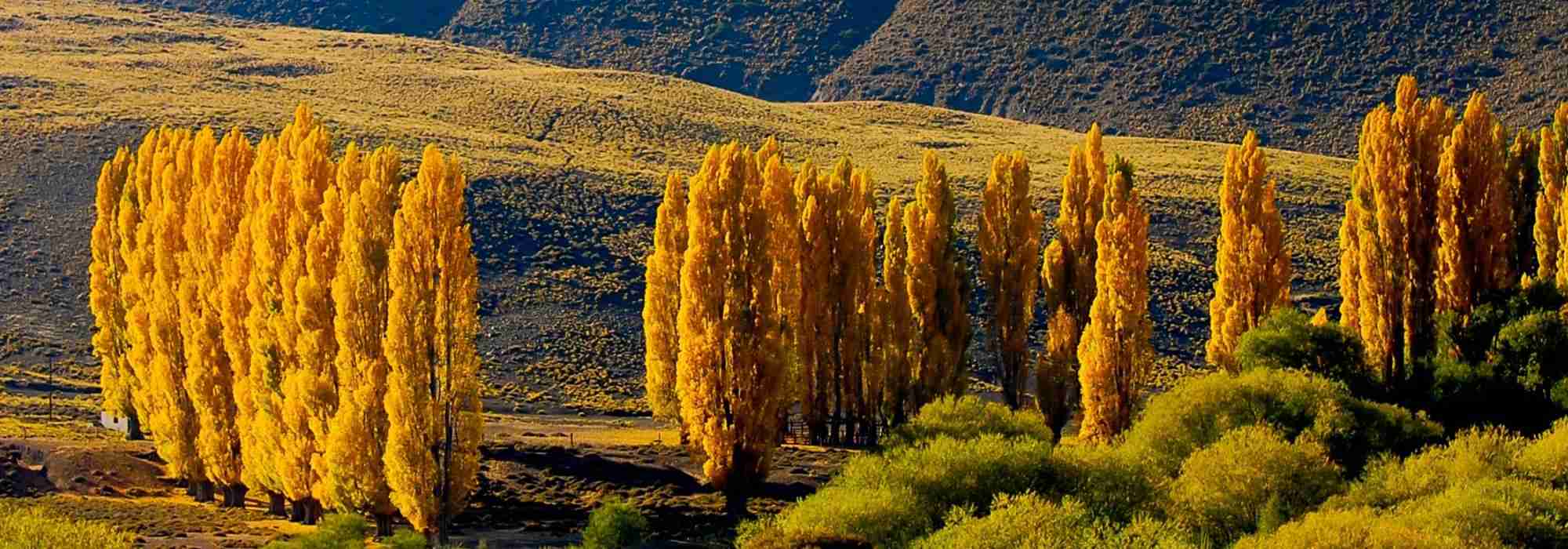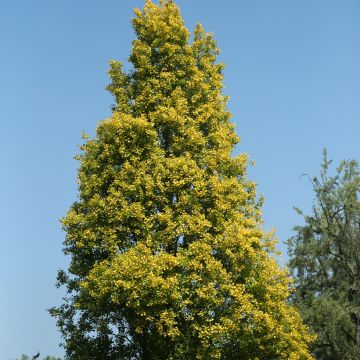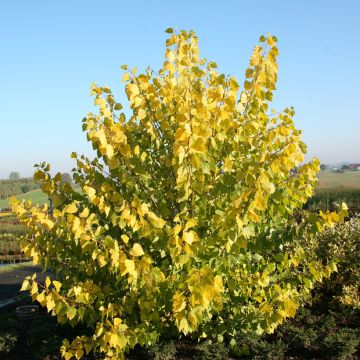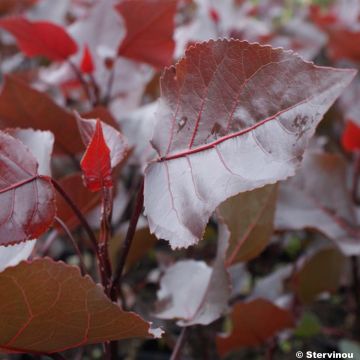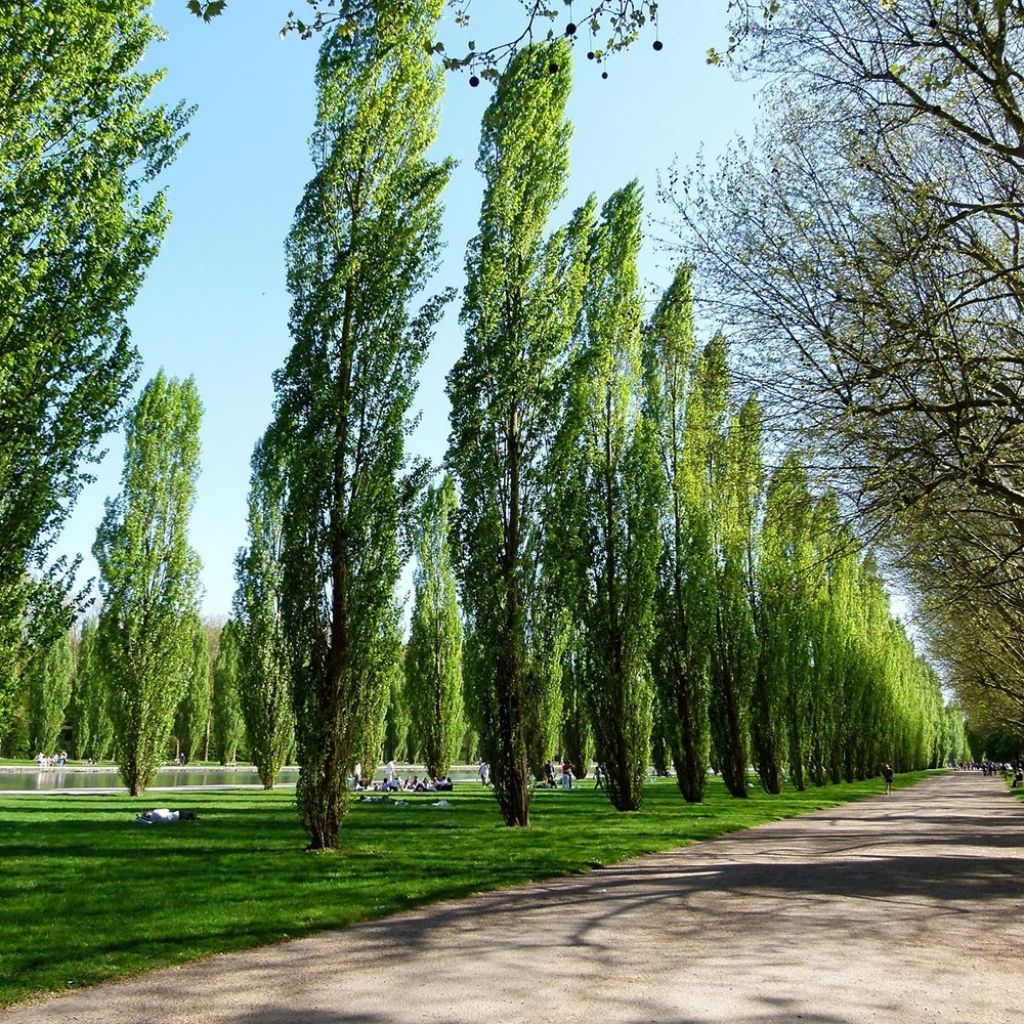

Populus nigra Italica - Black Poplar
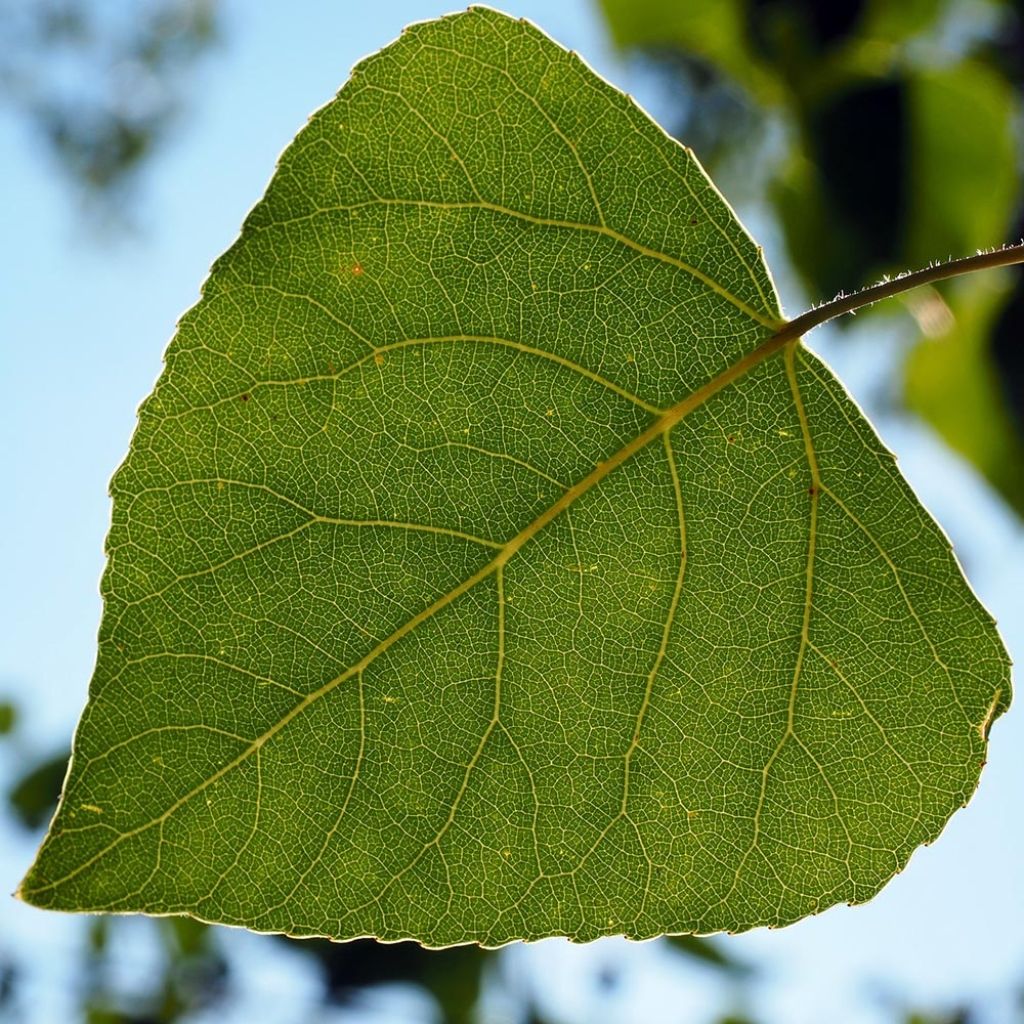

Populus nigra Italica - Black Poplar
Populus nigra Italica - Black Poplar
Populus nigra Italica
Black Poplar
Special offer!
Receive a €20 voucher for any order over €90 (excluding delivery costs, credit notes, and plastic-free options)!
1- Add your favorite plants to your cart.
2- Once you have reached €90, confirm your order (you can even choose the delivery date!).
3- As soon as your order is shipped, you will receive an email containing your voucher code, valid for 3 months (90 days).
Your voucher is unique and can only be used once, for any order with a minimum value of €20, excluding delivery costs.
Can be combined with other current offers, non-divisible and non-refundable.
Home or relay delivery (depending on size and destination)
Schedule delivery date,
and select date in basket
This plant carries a 24 months recovery warranty
More information
We guarantee the quality of our plants for a full growing cycle, and will replace at our expense any plant that fails to recover under normal climatic and planting conditions.

Does this plant fit my garden?
Set up your Plantfit profile →
Description
Populus nigra 'Italica', the Italian Poplar, is the iconic alignment tree of rivers, canals, banks and roads. This tall tree is immediately recognisable with its dark and slender silhouette, and almost columnar habit. It is elegantly adorned with rustling foliage of a shiny dark green colour that turns a beautiful golden yellow in autumn. With rapid growth and good longevity, this robust poplar is adaptable to all soils that remain moist. Superb as a large windbreak curtain on the outskirts of the countryside, it is perfect near water sources.
Populus nigra 'Italica' belongs to the Salicaceae family. It is often considered a subspecies of the black poplar, introduced to Italy in the 18th century from Afghanistan and Iran. Adapted to moist to wet soils, this poplar develops an extensive and sprawling root system, and has a tendency to sucker. For this reason, it should be planted away from buildings (at least 30 m (98.4 ft)). The Italian poplar can reach a height of 30 m (98.4 ft) with a spread of 5 m (16.4 ft), and its growth is fast. It is highly resistant to cold. This tree can live up to 150 years.
It develops a vertical trunk that rises to the top of the crown, without large secondary branches, but with multiple fine branches which are almost vertical and tightly pressed against the trunk. They form a dense crown, shaped like a flame. With time, on mature specimens, the trunk hollows out from the inside, and its greyish to blackish bark becomes rough and increasingly channelled. The young bark is smooth, thin, and greyish in colour. In early spring, its triangular to lozenge-shaped leaves appear, leathery, with serrated edges, attached to a flattened petiole, dark green and shiny on the upper side, turning yellow in October before falling. The Italian Poplar is a dioecious plant, meaning there are male and female individuals. Flowering occurs in March-April. The inflorescences are pendulous catkins: the male catkins, without peduncles, are reddish-purple, while the female catkins, suspended on a peduncle, are tinged with yellowish-green. After wind pollination, the female trees bear fruits grouped in clusters, with cottony seeds that will be dispersed by the wind.
The Italian poplar is the host of an elegant night butterfly called the Poplar Hawk-moth (Laothoe populi).
The Italian Poplar is suitable for large gardens or for landscaping parks. It is perfect, for example, along watercourses and large natural ponds. It could be planted alongside alder, willow and ash, which also appreciate the proximity of water. When planted closely together, this tree can also serve as a large windbreak screen.
Populus nigra Italica - Black Poplar in pictures
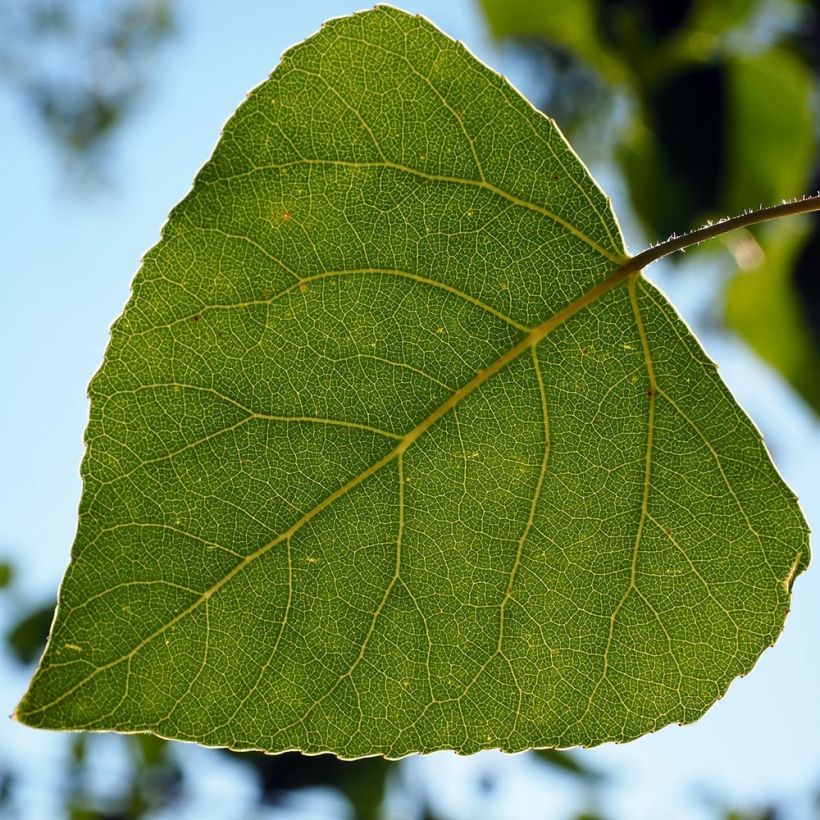



Plant habit
Flowering
Foliage
Botanical data
Populus
nigra
Italica
Salicaceae
Black Poplar
Western Europe
Other Populus - Poplar
View all →Planting and care
Plant in any well-cultivated soil that remains moist to wet. However, it requires a sunny exposure. This tree prefers riverbanks and alluvial valleys. Nevertheless, it can tolerate normal soils in a well-watered climate. If necessary, maintenance pruning should be carried out before the vegetation resumes, by removing diseased or dead wood and crossed branches. This variety may be susceptible to certain diseases (galls) without great seriousness. Poplar canker, caused by a pathogenic fungus, can be more virulent, especially in individuals weakened by poor growing conditions (too dry or poor soil).
Planting period
Intended location
Care
Planting & care advice
-
, onOrder confirmed
Reply from on Promesse de fleurs
Haven't found what you were looking for?
Hardiness is the lowest winter temperature a plant can endure without suffering serious damage or even dying. However, hardiness is affected by location (a sheltered area, such as a patio), protection (winter cover) and soil type (hardiness is improved by well-drained soil).

Photo Sharing Terms & Conditions
In order to encourage gardeners to interact and share their experiences, Promesse de fleurs offers various media enabling content to be uploaded onto its Site - in particular via the ‘Photo sharing’ module.
The User agrees to refrain from:
- Posting any content that is illegal, prejudicial, insulting, racist, inciteful to hatred, revisionist, contrary to public decency, that infringes on privacy or on the privacy rights of third parties, in particular the publicity rights of persons and goods, intellectual property rights, or the right to privacy.
- Submitting content on behalf of a third party;
- Impersonate the identity of a third party and/or publish any personal information about a third party;
In general, the User undertakes to refrain from any unethical behaviour.
All Content (in particular text, comments, files, images, photos, videos, creative works, etc.), which may be subject to property or intellectual property rights, image or other private rights, shall remain the property of the User, subject to the limited rights granted by the terms of the licence granted by Promesse de fleurs as stated below. Users are at liberty to publish or not to publish such Content on the Site, notably via the ‘Photo Sharing’ facility, and accept that this Content shall be made public and freely accessible, notably on the Internet.
Users further acknowledge, undertake to have ,and guarantee that they hold all necessary rights and permissions to publish such material on the Site, in particular with regard to the legislation in force pertaining to any privacy, property, intellectual property, image, or contractual rights, or rights of any other nature. By publishing such Content on the Site, Users acknowledge accepting full liability as publishers of the Content within the meaning of the law, and grant Promesse de fleurs, free of charge, an inclusive, worldwide licence for the said Content for the entire duration of its publication, including all reproduction, representation, up/downloading, displaying, performing, transmission, and storage rights.
Users also grant permission for their name to be linked to the Content and accept that this link may not always be made available.
By engaging in posting material, Users consent to their Content becoming automatically accessible on the Internet, in particular on other sites and/or blogs and/or web pages of the Promesse de fleurs site, including in particular social pages and the Promesse de fleurs catalogue.
Users may secure the removal of entrusted content free of charge by issuing a simple request via our contact form.
The flowering period indicated on our website applies to countries and regions located in USDA zone 8 (France, the United Kingdom, Ireland, the Netherlands, etc.)
It will vary according to where you live:
- In zones 9 to 10 (Italy, Spain, Greece, etc.), flowering will occur about 2 to 4 weeks earlier.
- In zones 6 to 7 (Germany, Poland, Slovenia, and lower mountainous regions), flowering will be delayed by 2 to 3 weeks.
- In zone 5 (Central Europe, Scandinavia), blooming will be delayed by 3 to 5 weeks.
In temperate climates, pruning of spring-flowering shrubs (forsythia, spireas, etc.) should be done just after flowering.
Pruning of summer-flowering shrubs (Indian Lilac, Perovskia, etc.) can be done in winter or spring.
In cold regions as well as with frost-sensitive plants, avoid pruning too early when severe frosts may still occur.
The planting period indicated on our website applies to countries and regions located in USDA zone 8 (France, United Kingdom, Ireland, Netherlands).
It will vary according to where you live:
- In Mediterranean zones (Marseille, Madrid, Milan, etc.), autumn and winter are the best planting periods.
- In continental zones (Strasbourg, Munich, Vienna, etc.), delay planting by 2 to 3 weeks in spring and bring it forward by 2 to 4 weeks in autumn.
- In mountainous regions (the Alps, Pyrenees, Carpathians, etc.), it is best to plant in late spring (May-June) or late summer (August-September).
The harvesting period indicated on our website applies to countries and regions in USDA zone 8 (France, England, Ireland, the Netherlands).
In colder areas (Scandinavia, Poland, Austria...) fruit and vegetable harvests are likely to be delayed by 3-4 weeks.
In warmer areas (Italy, Spain, Greece, etc.), harvesting will probably take place earlier, depending on weather conditions.
The sowing periods indicated on our website apply to countries and regions within USDA Zone 8 (France, UK, Ireland, Netherlands).
In colder areas (Scandinavia, Poland, Austria...), delay any outdoor sowing by 3-4 weeks, or sow under glass.
In warmer climes (Italy, Spain, Greece, etc.), bring outdoor sowing forward by a few weeks.






























